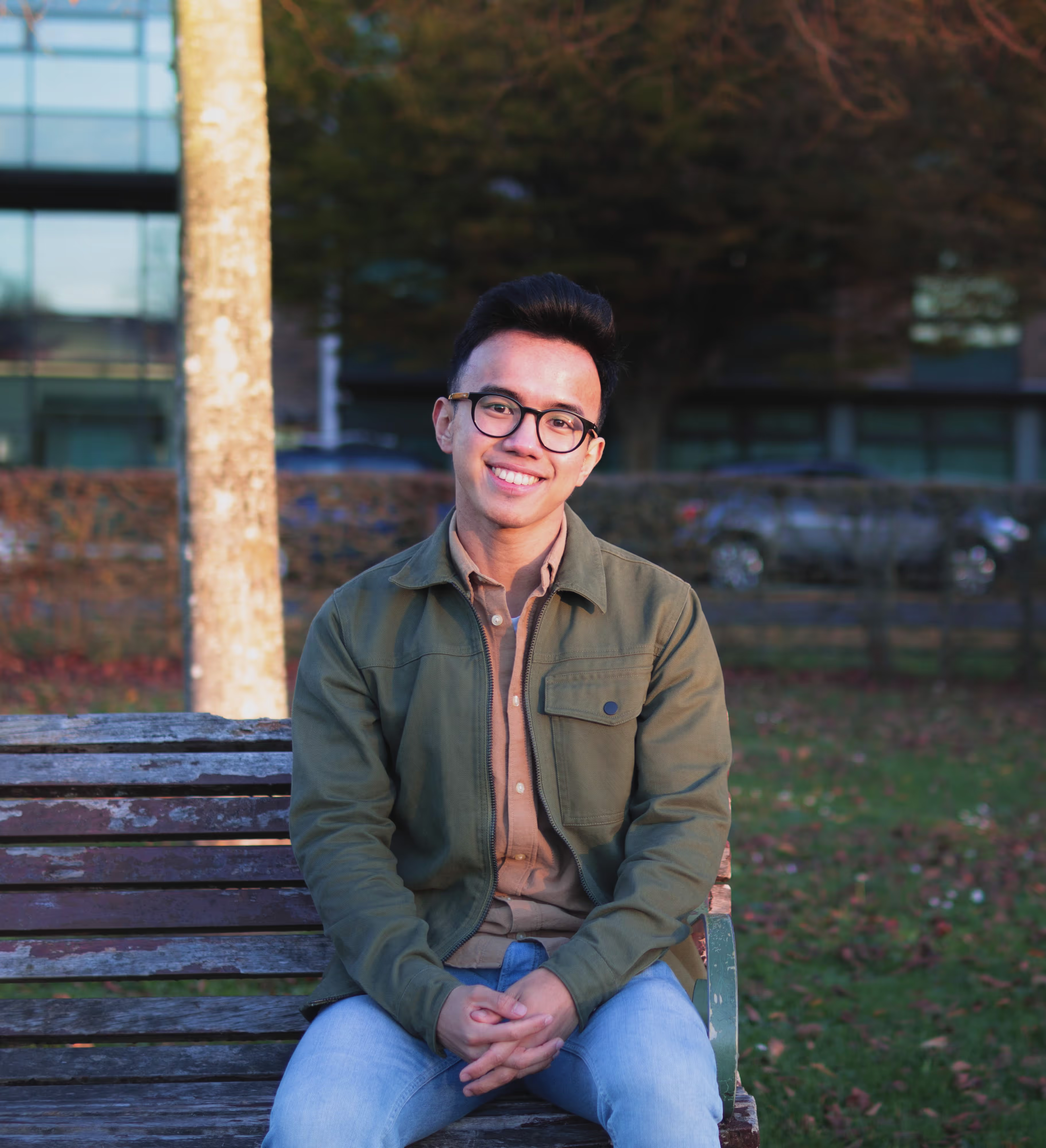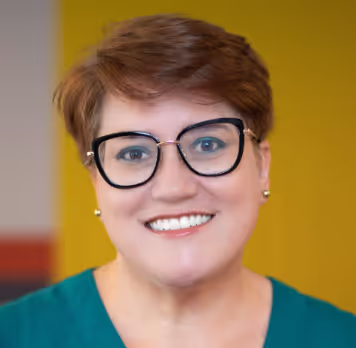
The Founder’s Story: INSPO Was Built to Break the Mould
Discover the story of INSPO's Founder: his career journey, lifelong passion for content, and how building the platform became the natural next step.
The First Lightbulb
It was a Sunday morning at my favourite café in a little-known progressive town in England called Letchworth Garden City. I was sipping my usual Americano, scrolling through social media with soft tunes playing in the background, when it hit me. There’s no space dedicated to expert content and thought leadership.
That might seem like a specific and niche insight to strike someone mid-scroll, but for me, it had deep roots. My relationship with media, and how we consume, create, and harness it for social and economic value, started early in life.
Growing Up in a Social Media Nation: Discovering the Joy of Creating for an Audience
I was born and raised in the Philippines, a densely populated Southeast Asian archipelago with a profound passion for social media. Our daily usage ranks among the highest in the world. I was in my early teens when MySpace, Friendster, Facebook, and Instagram began to explode in popularity. Filipinos embraced these platforms voraciously and often uncritically. Social media became tightly woven into every aspect of life—friendships, family, school, work, even church. It served as both inspiration and aspiration. It connected us to people and ideas beyond our own shores, transforming what would otherwise feel like a remote and far-flung corner of the world into something more globally aware. Without a doubt, social media has always had the power to shape thoughts, beliefs, and behaviours.
Growing up, I explored all sorts of creative pursuits. I aspired to be a painter, joined a poetry club for young writers, launched a blog to share my drawings and stories, experimented extensively with Photoshop, tried my hand at graphic design, and even produced cover music videos on YouTube (now hidden, for good reason!) I loved creating pieces that could be appreciated by others. Looking back, what I loved most was the process of creating content—understanding a medium, learning how to use it, and building something for a particular audience. Whether it was a painting, poem, blog post, or video, I was drawn to that process.
What I loved most was the process of creating content—understanding a medium, learning how to use it, and building something for a particular audience.
But my eye for content wasn’t limited to the arts. I developed an appreciation for nonfiction and educational content—guides, handbooks, and textbooks. A naturally studious child, I became attuned to tone of voice, structure, and visual presentation. I noticed when a textbook was designed to support learning from start to finish. This meta-awareness helped me develop an editorial instinct: I could tell when content, be it for education or entertainment, was well made and effective for its intended audience.
A Shift Toward Media with Purpose
I graduated top of my class and was fortunate enough to attend a top private university in Manila. It felt like a huge leap from my small town, just one or two hours away. I pursued a degree in Media Studies, specialising in advertising and communications. My classes ranged from media theory and journalism to graphic and web design to strategic communications. I dreamed of joining a top advertising agency, and after an internship at Ogilvy (then ranked the best in the country), I was sure that was my path, media production, combined with analysis and strategy, felt intellectually stimulating.
But somewhere along the way, my relationship with media shifted. I fell in love with two subjects I had taken as minors: Education and Sociology.
In Education, I became fascinated by the history and evolution of educational media, from the rise of educational radio in the 1920s and film in the 1930s to the digital platforms of today. I became inspired by media’s power not only to entertain, but to inform, educate, and inspire. In Sociology, I explored how media shapes our identities and societal structures—how it can be used as a force for good or harm. By the end of my degree, I was sold. I wanted to work in educational media—content that could inspire, provoke critical thought, and ultimately help people see the world differently.
I became inspired by media’s power not only to entertain, but to inform, educate, and inspire.
From Manila to Oxford: Diving Deep into Content for Learning
Eager and somewhat naive, I applied to several universities abroad, looking for programmes that combined education and media. My path became clear when I was accepted to study for a Master’s in Learning and Technology at Oxford University. The course offered a critical examination of how technology facilitates learning both formally and informally and how it reshapes education itself. So, I packed my bags and left for England. What felt like an ending was really a beginning. I later learned that I was among the first 100 people from my country to ever be officially matriculated into Oxford.
I graduated with highest honours, based on my dissertation exploring how people’s “user identities”, a theoretical framework I developed, and everyday technology use impact their life and career outcomes. My passion for innovation was solidified when I won a graduate innovation competition and received £15,000 to develop a prototype for an educational VR app. The app aimed to enhance university learning by allowing users to discover historic objects in the city of Oxford through geolocation—think Pokémon Go, but for the city’s ancient artifacts.
After Oxford, I dove into London’s bustling EdTech scene. I worked across a variety of learning products, from a social learning platform and content marketplace, to a training platform for data professionals, to a gamified learning app for leisure learning, to an educational charity delivering remote learning solutions globally. At FutureLearn, I led the education and healthcare content portfolios, the platform's largest and highest-revenue categories, during a period when the company secured the highest amount of venture funding in Europe. I collaborated with subject matter experts and industry leaders around the world to build content that made a real difference. I learned to produce, design, package, distribute, review, and assess every format imaginable: videos, podcasts, articles, whitepapers, online courses—long, short, and micro-sized.
I collaborated with subject matter experts and industry leaders around the world to build content that made a real difference.
I learned about the different ways content can be monetised across various contexts, whether by selling it to consumers, businesses, or governments, with some business models and value propositions proving more successful than others. While high-quality content certainly matters, what ultimately made the difference was the voice behind it: whether it came from someone seen as trustworthy and credible.
A marriage, a mortgage, a British citizenship ceremony, and a few hard-earned career lessons later, I found myself wanting more. That hunger, perhaps a mix of ambition and restlessness, has always been part of me. It’s what drew me to the intense, round-the-clock world of advertising, and what gave me the courage to start over in a foreign country. I’ve always been deeply interested in the societal role of media, shaped by my cultural upbringing and sharpened by academic and professional experience.
The Creator Economy’s Missing Link
And then, technology shifted again. The rise of generative AI changed the media landscape. Content creation, whether written, visual, or audio, became easier and more accessible. These tools started to transform not just learning and entertainment, but the way we present ourselves professionally. LinkedIn, once known primarily for job-seeking, became saturated with thought leadership—people sharing posts to demonstrate their expertise. Those more serious about this moved to Substack, publishing newsletters on topics from wellness to finance to film, hoping to monetise their insights and perspectives.
It all hit me that Sunday morning: there’s still no dedicated space for expert content and thought leadership. LinkedIn offers an audience but no monetisation model. Creator platforms offer monetisation but not the right kind of audience. There’s no single place focused on sharing, discovering, and monetising the kind of hard-earned insights that professionals want to share. This gap is surprising when you consider that other creator categories already exist: Substack for culture, Patreon for the arts, OnlyFans for adult content. But nothing exists for professionals wanting to participate in the creator economy in the same way.
It all hit me that Sunday morning: there’s still no dedicated space for expert content and thought leadership.
Suddenly, I was also transported back to my graduate studies, where I’d first encountered the persistent challenges faced by those in traditional academic publishing—unpaid peer reviews, lengthy lead times, and limited remuneration. Alongside these structural issues was the deeper problem of a disconnect between industry and academia, with minimal interaction or cross-pollination between the two. Added to that was the striking absence of any social network recognised, especially within academic circles, as a credible source of knowledge or insight from authoritative voices. It made me wonder: could people with deep knowledge, whether professional or academic, hard-won experience, and valuable insight be missing out in a big way? Where is the social or creator platform truly built with their needs in mind?
Challenging the Status Quo of Social Platforms
INSPO was born out of a desire to solve that problem—to create a space for insightful, credible, and authoritative content. A place where professionals can build their profiles in an organic and social way, while capturing and reflecting the body of knowledge and insight they’ve accumulated over the span of their careers. A platform that encourages thoughtful exchange, meaningful discourse, and critical thinking, within a space where your contributions and expertise can be recognised and rewarded.
While the idea of INSPO came together on that Sunday morning, its roots run deep. Many people tell me the proposition is so obvious that they’re shocked it doesn’t already exist. But the insight and perhaps the courage to challenge the status quo of dominant social networks and creator platforms comes from my own journey. I’ve always believed media can be a force for positive social change. And we’ve all seen what happens when it’s not used responsibly and intentionally.
The insight and perhaps the courage to challenge the status quo of dominant social networks and creator platforms comes from my own journey.
So here’s to a new alternative for social networking—a space designed for critical thinking, meaningful exchange, and thoughtful conversation, with the power to transform how we work, learn, and play across all stages of life. That’s INSPO. A platform that, like me, was never meant to follow. INSPO was always meant to lead and to break the mould. With a little luck and plenty of conviction, it might just go the distance.
.svg)
.avif)







